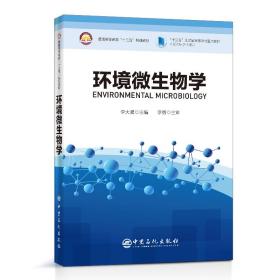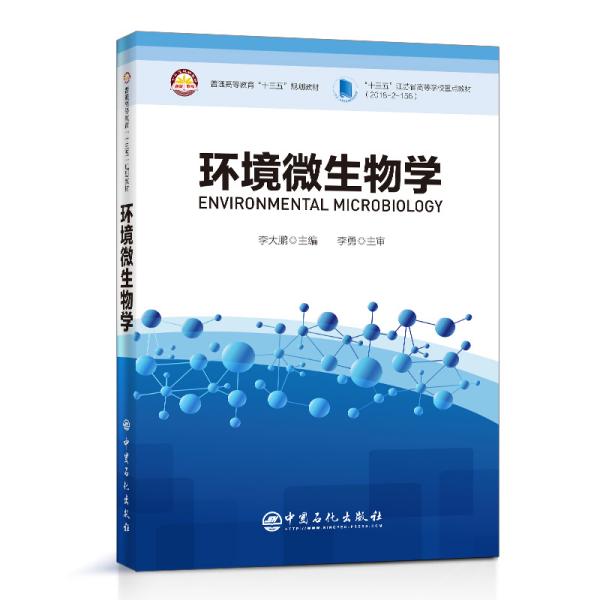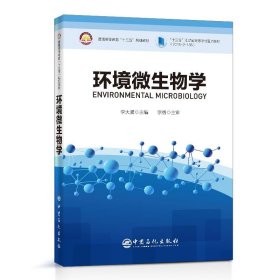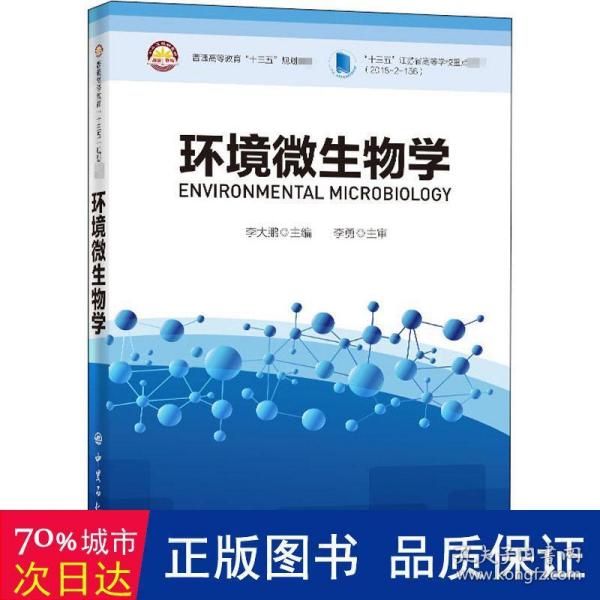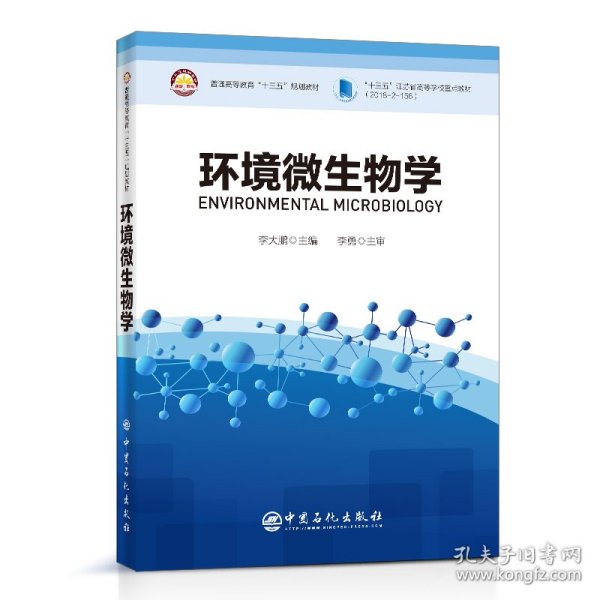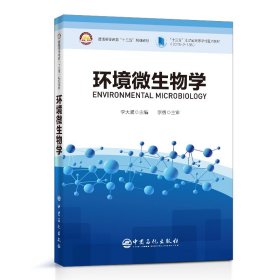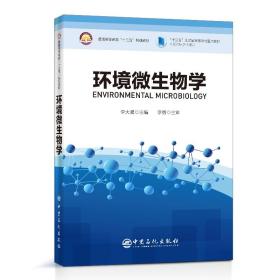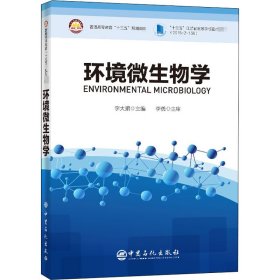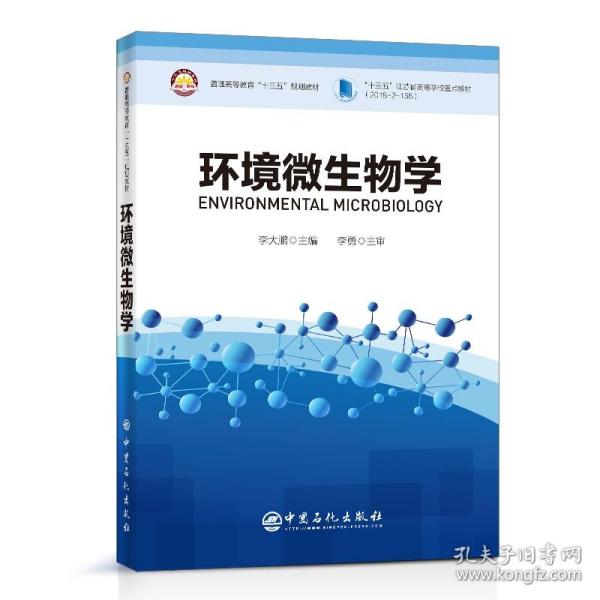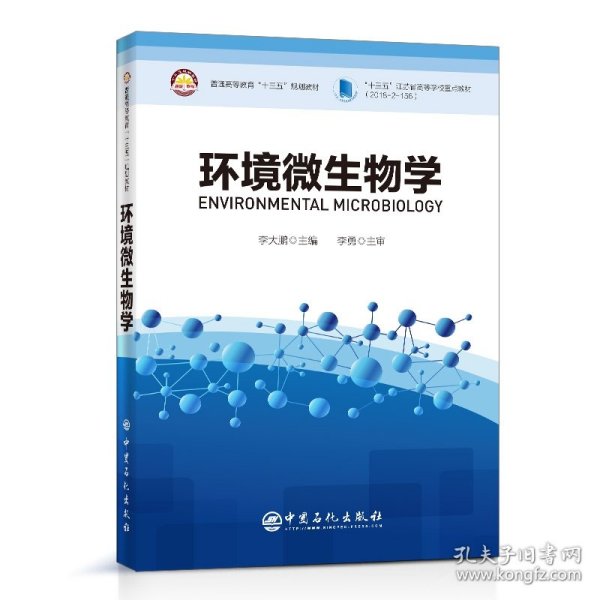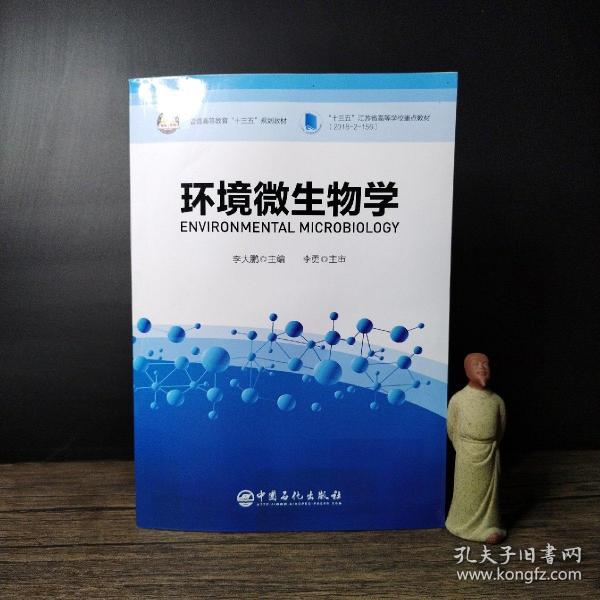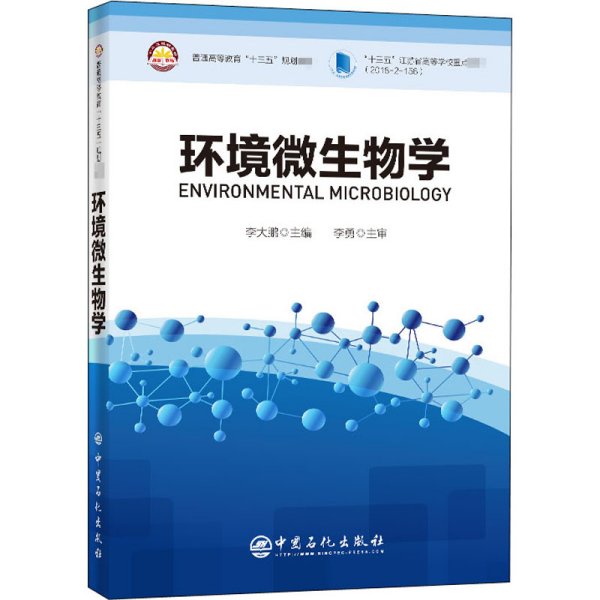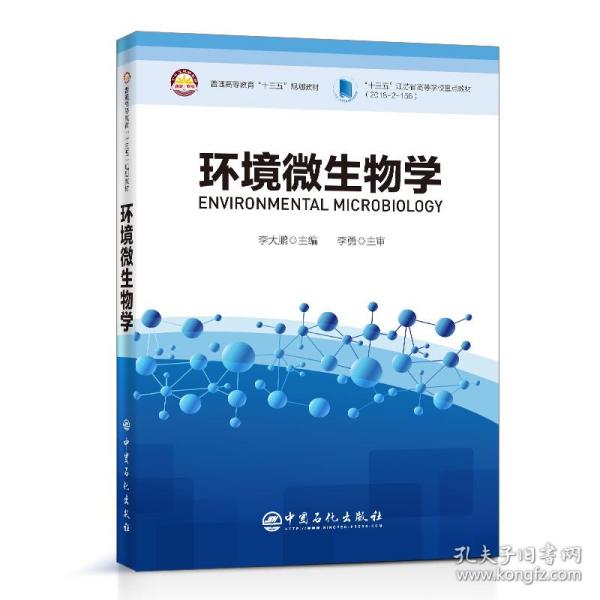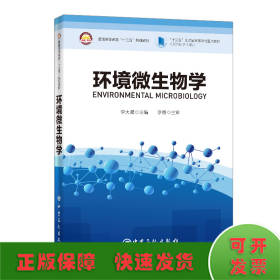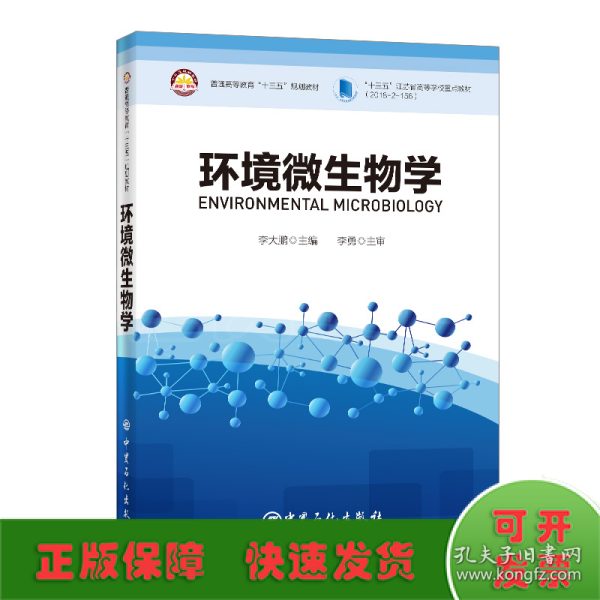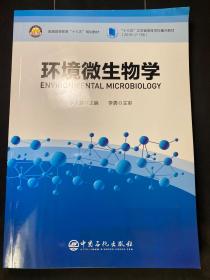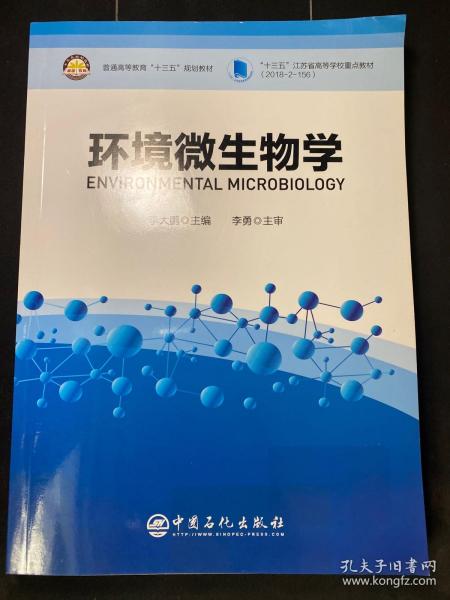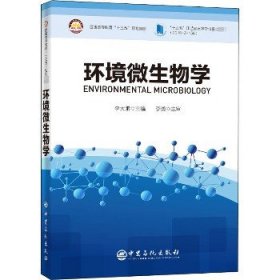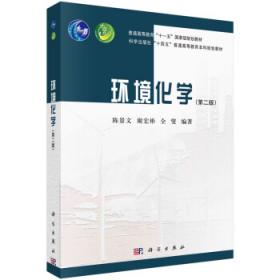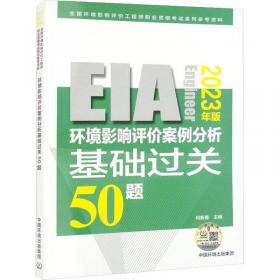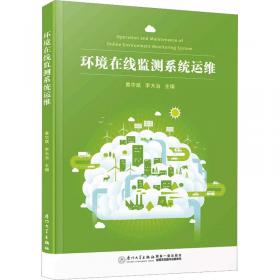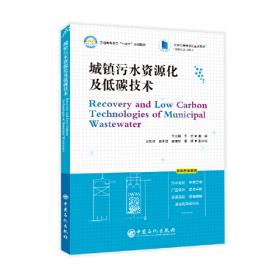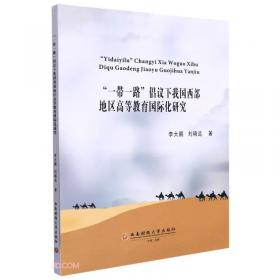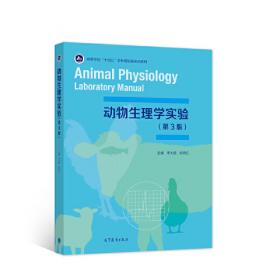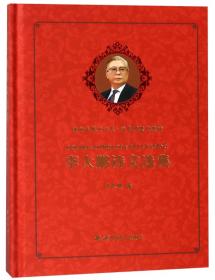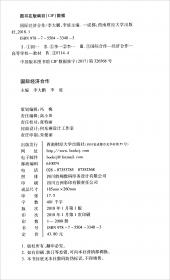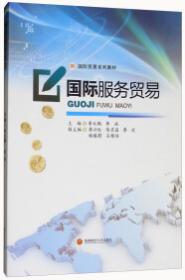环境微生物学普通高等教育“十三五”规划教材
出版时间:
2020-07
版次:
1
ISBN:
9787511457318
定价:
65.00
装帧:
平装
开本:
16开
纸张:
胶版纸
页数:
349页
1人买过
-
《环境微生物学》(Environmental Microbiology)是环境类相关专业的核心基础课程,而微生物学在水处理领域的应用日趋广泛。本教材在总结以往教学经验,充分融合了微生物与水处理领域相关技术的发展,囊括目前本领域的新发现、新知识、新技术、新应用的基础上,编制而成。
李大鹏,男,44岁,苏州科技大学/省协同创新中心管委会办公室主任/教授,高等教育给排水科学与工程专业评估委员会委员,专业方向:农村生活污水处理,地表水修复/访问学者1年,为国际留学生全英文授课4年。主持完成国家自然科学基金3项,主持完成省部级项目3项,参与完成国家自然科学基金重点项目1项和“十一五”水重大专项1项;目前主持国家自然科学基金1项、“十三五”水重大专项子课题2项、省高校重大项目1项。参编《湖泊沉积物界面过程与效应》,2013年,科学出版社,独立撰写第10章,4万字。迄今,公开发表文章102篇,其中SCI6篇(1区1篇,2区3篇),EI15篇,CSCD收录31篇。
Chapter 1 Introduction 7
1.1 Environmental Microbiology as a Discipline 7
1.2 Presence of Microbes in Our lives 9
1.2.1 Microbes in Our Body 9
1.2.2 Microbes in the Atmosphere 9
1.2.3 Microbes in Soil 10
1.2.4 Microbes in Water 10
1.2.5 Microbes of Plants 11
1.2.6 Microbes of Animal Origin 11
1.3 An Historical Perspective 12
1.4 Modern Environmental Microbiology 14
Chapter 2 Non-cellular Life: Viruses 18
2.1 General Characteristics and Classification of Viruses 18
2.1.1 Characteristics of viruses 18
2.1.2 Classification of viruses 18
2.2 Virus Morphology and Structure 19
2.2.1 Morphology and size of virus 20
2.2.2 Chemical composition and structure of virus 20
2.3 Virus Propagation 22
2.3.1 Reproduction process of virus 22
2.3.2 Lysogenicity of virus 23
2.4 Virus Cultivation 24
2.4.1 Culture characteristics of viruses 24
2.4.2 Culture medium for viruses 25
2.4.3 The cultivation of viruses 25
2.5 Resistance to Physical and Chemical Affects and Removal of Virus from Sewage Treatment Processes 27
2.5.1 Resistance of virus to physical factors 27
2.5.2 Resistance of virus to chemical factors 28
2.5.3 Viruses resistant to antibacterial substances 29
2.5.4 Virus survival in environment and its removal in sewage treatment process 29
Chapter 3 Prokaryotic Microorganisms 32
3.1 Bacteria 32
3.1.1 Morphology and size of bacteria 32
3.1.2 Cell structure of bacteria 40
3.1.3 Characteristics of bacterial culture 49
3.1.4 Physical and chemical properties of bacteria 52
3.2 Archaea 56
3.2.1 Characteristics of archaea 57
3.2.2 Classification of archaea 58
3.3 Actinomycetes 61
3.3.1 Morphology and size of actinomycete 62
3.3.2 Colony morphology of actinomycetes 64
3.3.3 Actinomycetes reproduction 64
3.4 Cyanobacteria 64
3.4.1 Chroococcophyceae 66
3.4.2 Hormogonophyceae 66
3.5 Spirochete 66
3.6 Rickettsia and Mycoplasma 67
3.6.1 Rickettsia 67
3.6.2 Mycoplasma 67
Chapter 4 Eukaryotic Microorganism 69
4.1 Protozoa 69
4.1.1 General characteristics of protozoa 69
4.1.2 Classification of protozoa 70
4.1.3 Cyst of protozoa 77
4.2 Miniature Metazoa 77
4.2.1 Rotifer 77
4.2.2 Nematode 79
4.2.3 Oligochaetes 79
4.2.4 Crustacean plankton 79
4.2.5 Bryozoan and Plumatella 80
4.3 Algae 81
4.3.1 General characteristics of algae 81
4.3.2 Classification and characteristics of algae 81
4.4 Fungus 87
4.4.1 Yeast 87
4.4.2 Mold 91
4.4.3 Agaricales 96
Chapter 5 Microbial metabolism 98
5.1 Overview of microbial metabolism 98
5.2 Microbial enzymes and enzymatic reactions 98
5.2.1 The composition of enzyme 99
5.2.2 Several important prothetic groups and coenzymes 99
5.2.3 Structure of zymoprotein 102
5.2.4 Active site of enzyme 103
5.2.5 Catalytic properties of enzyme 103
5.2.6 Factors affect the enzymatic reaction rate 105
5.2.7 Environmental applications of microbial enzymes 108
5.3 Microbial energy metabolism 109
5.3.1 Biological oxidation and energy generation of microorganisms 109
5.3.2 Biological oxidation types and energy-producing metabolism 110
5.3.3 Other metabolic pathways 112
5.4 Microbial anabolism 112
5.4.1 Anabolism of methanogens 112
5.4.2 Anabolism of chemoautotroph 113
5.4.3 Photosynthesis 113
5.4.4 Anabolism of heterotrophic microorganisms 115
References 115
Chapter 6 Microbial nutrition and growth 116
6.1 Microbial nutrition 116
6.1.1 Cellular compositions 116
6.1.2 Nutrients and trophic types of microorganisms 117
6.1.3 Ratio of carbon, nitrogen 122
6.1.4 Types of culture medium 122
6.1.5 The way nutrients enter microbial cells 123
6.2 Microbial growth 125
6.2.1 Microbial growth 126
6.2.2 Microbial cultivation 126
6.2.3 Growth in natural environment 132
6.2.4 Methods for determination of microbial growth 134
6.3 Effects of environmental factors on microbial growth 135
6.3.1 Temperature 135
6.3.2 pH 136
6.3.3 Redox potential 138
6.3.4 Dissolved oxygen 138
6.3.5 Solar radiation 141
6.3.6 Water activity and osmotic pressure 142
6.3.7 Surface tension 143
6.4 Relationship between microbial nutrition and biological wastewater treatment 143
6.4.1 Mechanism of microbial wastewater treatment 143
6.4.2 Microbial purifying functions 143
6.4.3 Biochemical oxygen demand and its application in biological wastewater treatment 144
6.4.4 Nutrient deficiency and biological wastewater treatment 144
6.4.5 Deficiency of trace elements and biological wastewater treatment 145
References 145
Chapter 7 Microbial Genetics and Mutation Objectives 148
7.1 Microbial Genetics 148
7.1.1 Confirmation of Genetic Material 148
7.1.2 The Composition and Structure of Nucleic Acid 149
7.1.3 DNA Replication 153
7.1.4 Denaturation of DNA 156
7.1.5 the Transmission of Genetic Information 157
7.2 Microbial Mutations 159
7.2.1 Mechanisms of mutation 159
7.2.2 Causes of Mutations 160
7.2.3 The main Mutation types of procaryote 160
7.3 Applications of Microbial Genetics in Environment Engineering 164
Chapter 8 Microbial ecology 169
8.1 Ecosystem 169
8.1.1 Ecosystem and biosphere 169
8.1.2 Ecological equilibrium 170
8.1.3 Classification of ecosystem 171
8.2 Soil microbial ecology 171
8.2.1 Ecological conditions in soil 171
8.2.2 Microorganisms in soil 172
8.2.3 Functions of microorganisms in soil 172
8.2.4 Soil contamination and the microbial ecology 173
8.3 Atmospheric microbial ecology 174
8.3.1 Ecological conditions in air 174
8.3.2 Species, amount and distribution of airborne microbes 174
8.3.3 Hygienic standard of air microorganism and biological cleaning technology 175
8.4 Aquatic microbial ecology 175
8.4.1 The aquatic environments 175
8.4.2 Sources of the aquatic microorganisms 175
8.4.3 Some aquatic microorganisms 176
8.4.4 Water pollution and the microbial ecology 177
8.4.5 Eutrophication 179
8.5 Relationships among microorganisms 180
8.5.1 Competition 180
8.5.2 Protocooperation 180
8.5.3 Symbiosis 180
8.5.4 Amensalism 181
8.5.5 Predation 181
8.5.6 Parasitism 181
8.6 Environmental self-purification and pollution control engineering 181
8.6.1 Soil self-purification and remediation 181
8.6.2 Self-purification of water body 184
References 186
Chapter 9 Biogeochemical Cycling 187
9.1 Water Cycle 188
9.2 Carbon Cycle 189
9.2.1 The biological carbon cycle 190
9.2.2 The geological carbon cycle 190
9.3 The nitrogen cycle 191
9.3.1 Nitrogen cycle mechanism 192
9.3.2 Nitrogen cycling in marine ecosystems 192
9.3.3 Human activity affects cycling of nitrogen 193
9.4 Sulfur cycle 193
9.4.1 Mechanism of sulfur cycle 193
9.5 Heavy Metal Cycle 194
......
-
内容简介:
《环境微生物学》(Environmental Microbiology)是环境类相关专业的核心基础课程,而微生物学在水处理领域的应用日趋广泛。本教材在总结以往教学经验,充分融合了微生物与水处理领域相关技术的发展,囊括目前本领域的新发现、新知识、新技术、新应用的基础上,编制而成。
-
作者简介:
李大鹏,男,44岁,苏州科技大学/省协同创新中心管委会办公室主任/教授,高等教育给排水科学与工程专业评估委员会委员,专业方向:农村生活污水处理,地表水修复/访问学者1年,为国际留学生全英文授课4年。主持完成国家自然科学基金3项,主持完成省部级项目3项,参与完成国家自然科学基金重点项目1项和“十一五”水重大专项1项;目前主持国家自然科学基金1项、“十三五”水重大专项子课题2项、省高校重大项目1项。参编《湖泊沉积物界面过程与效应》,2013年,科学出版社,独立撰写第10章,4万字。迄今,公开发表文章102篇,其中SCI6篇(1区1篇,2区3篇),EI15篇,CSCD收录31篇。
-
目录:
Chapter 1 Introduction 7
1.1 Environmental Microbiology as a Discipline 7
1.2 Presence of Microbes in Our lives 9
1.2.1 Microbes in Our Body 9
1.2.2 Microbes in the Atmosphere 9
1.2.3 Microbes in Soil 10
1.2.4 Microbes in Water 10
1.2.5 Microbes of Plants 11
1.2.6 Microbes of Animal Origin 11
1.3 An Historical Perspective 12
1.4 Modern Environmental Microbiology 14
Chapter 2 Non-cellular Life: Viruses 18
2.1 General Characteristics and Classification of Viruses 18
2.1.1 Characteristics of viruses 18
2.1.2 Classification of viruses 18
2.2 Virus Morphology and Structure 19
2.2.1 Morphology and size of virus 20
2.2.2 Chemical composition and structure of virus 20
2.3 Virus Propagation 22
2.3.1 Reproduction process of virus 22
2.3.2 Lysogenicity of virus 23
2.4 Virus Cultivation 24
2.4.1 Culture characteristics of viruses 24
2.4.2 Culture medium for viruses 25
2.4.3 The cultivation of viruses 25
2.5 Resistance to Physical and Chemical Affects and Removal of Virus from Sewage Treatment Processes 27
2.5.1 Resistance of virus to physical factors 27
2.5.2 Resistance of virus to chemical factors 28
2.5.3 Viruses resistant to antibacterial substances 29
2.5.4 Virus survival in environment and its removal in sewage treatment process 29
Chapter 3 Prokaryotic Microorganisms 32
3.1 Bacteria 32
3.1.1 Morphology and size of bacteria 32
3.1.2 Cell structure of bacteria 40
3.1.3 Characteristics of bacterial culture 49
3.1.4 Physical and chemical properties of bacteria 52
3.2 Archaea 56
3.2.1 Characteristics of archaea 57
3.2.2 Classification of archaea 58
3.3 Actinomycetes 61
3.3.1 Morphology and size of actinomycete 62
3.3.2 Colony morphology of actinomycetes 64
3.3.3 Actinomycetes reproduction 64
3.4 Cyanobacteria 64
3.4.1 Chroococcophyceae 66
3.4.2 Hormogonophyceae 66
3.5 Spirochete 66
3.6 Rickettsia and Mycoplasma 67
3.6.1 Rickettsia 67
3.6.2 Mycoplasma 67
Chapter 4 Eukaryotic Microorganism 69
4.1 Protozoa 69
4.1.1 General characteristics of protozoa 69
4.1.2 Classification of protozoa 70
4.1.3 Cyst of protozoa 77
4.2 Miniature Metazoa 77
4.2.1 Rotifer 77
4.2.2 Nematode 79
4.2.3 Oligochaetes 79
4.2.4 Crustacean plankton 79
4.2.5 Bryozoan and Plumatella 80
4.3 Algae 81
4.3.1 General characteristics of algae 81
4.3.2 Classification and characteristics of algae 81
4.4 Fungus 87
4.4.1 Yeast 87
4.4.2 Mold 91
4.4.3 Agaricales 96
Chapter 5 Microbial metabolism 98
5.1 Overview of microbial metabolism 98
5.2 Microbial enzymes and enzymatic reactions 98
5.2.1 The composition of enzyme 99
5.2.2 Several important prothetic groups and coenzymes 99
5.2.3 Structure of zymoprotein 102
5.2.4 Active site of enzyme 103
5.2.5 Catalytic properties of enzyme 103
5.2.6 Factors affect the enzymatic reaction rate 105
5.2.7 Environmental applications of microbial enzymes 108
5.3 Microbial energy metabolism 109
5.3.1 Biological oxidation and energy generation of microorganisms 109
5.3.2 Biological oxidation types and energy-producing metabolism 110
5.3.3 Other metabolic pathways 112
5.4 Microbial anabolism 112
5.4.1 Anabolism of methanogens 112
5.4.2 Anabolism of chemoautotroph 113
5.4.3 Photosynthesis 113
5.4.4 Anabolism of heterotrophic microorganisms 115
References 115
Chapter 6 Microbial nutrition and growth 116
6.1 Microbial nutrition 116
6.1.1 Cellular compositions 116
6.1.2 Nutrients and trophic types of microorganisms 117
6.1.3 Ratio of carbon, nitrogen 122
6.1.4 Types of culture medium 122
6.1.5 The way nutrients enter microbial cells 123
6.2 Microbial growth 125
6.2.1 Microbial growth 126
6.2.2 Microbial cultivation 126
6.2.3 Growth in natural environment 132
6.2.4 Methods for determination of microbial growth 134
6.3 Effects of environmental factors on microbial growth 135
6.3.1 Temperature 135
6.3.2 pH 136
6.3.3 Redox potential 138
6.3.4 Dissolved oxygen 138
6.3.5 Solar radiation 141
6.3.6 Water activity and osmotic pressure 142
6.3.7 Surface tension 143
6.4 Relationship between microbial nutrition and biological wastewater treatment 143
6.4.1 Mechanism of microbial wastewater treatment 143
6.4.2 Microbial purifying functions 143
6.4.3 Biochemical oxygen demand and its application in biological wastewater treatment 144
6.4.4 Nutrient deficiency and biological wastewater treatment 144
6.4.5 Deficiency of trace elements and biological wastewater treatment 145
References 145
Chapter 7 Microbial Genetics and Mutation Objectives 148
7.1 Microbial Genetics 148
7.1.1 Confirmation of Genetic Material 148
7.1.2 The Composition and Structure of Nucleic Acid 149
7.1.3 DNA Replication 153
7.1.4 Denaturation of DNA 156
7.1.5 the Transmission of Genetic Information 157
7.2 Microbial Mutations 159
7.2.1 Mechanisms of mutation 159
7.2.2 Causes of Mutations 160
7.2.3 The main Mutation types of procaryote 160
7.3 Applications of Microbial Genetics in Environment Engineering 164
Chapter 8 Microbial ecology 169
8.1 Ecosystem 169
8.1.1 Ecosystem and biosphere 169
8.1.2 Ecological equilibrium 170
8.1.3 Classification of ecosystem 171
8.2 Soil microbial ecology 171
8.2.1 Ecological conditions in soil 171
8.2.2 Microorganisms in soil 172
8.2.3 Functions of microorganisms in soil 172
8.2.4 Soil contamination and the microbial ecology 173
8.3 Atmospheric microbial ecology 174
8.3.1 Ecological conditions in air 174
8.3.2 Species, amount and distribution of airborne microbes 174
8.3.3 Hygienic standard of air microorganism and biological cleaning technology 175
8.4 Aquatic microbial ecology 175
8.4.1 The aquatic environments 175
8.4.2 Sources of the aquatic microorganisms 175
8.4.3 Some aquatic microorganisms 176
8.4.4 Water pollution and the microbial ecology 177
8.4.5 Eutrophication 179
8.5 Relationships among microorganisms 180
8.5.1 Competition 180
8.5.2 Protocooperation 180
8.5.3 Symbiosis 180
8.5.4 Amensalism 181
8.5.5 Predation 181
8.5.6 Parasitism 181
8.6 Environmental self-purification and pollution control engineering 181
8.6.1 Soil self-purification and remediation 181
8.6.2 Self-purification of water body 184
References 186
Chapter 9 Biogeochemical Cycling 187
9.1 Water Cycle 188
9.2 Carbon Cycle 189
9.2.1 The biological carbon cycle 190
9.2.2 The geological carbon cycle 190
9.3 The nitrogen cycle 191
9.3.1 Nitrogen cycle mechanism 192
9.3.2 Nitrogen cycling in marine ecosystems 192
9.3.3 Human activity affects cycling of nitrogen 193
9.4 Sulfur cycle 193
9.4.1 Mechanism of sulfur cycle 193
9.5 Heavy Metal Cycle 194
......
查看详情
-
环境微生物学
9787511457318 未翻阅 内页干净 正版书
九五品
河北省保定市
平均发货15小时
成功完成率84.97%
-
全新
河北省保定市
平均发货17小时
成功完成率82.93%
-
环境微生物学
【正版书籍 可开发票】120万个品种,一件代发,有需要联系哦,很多书籍没有上架
全新
河北省保定市
平均发货21小时
成功完成率83.79%
-
全新
河北省保定市
平均发货27小时
成功完成率88.31%
-
全新
江苏省苏州市
平均发货9小时
成功完成率95.53%
-
全新
北京市房山区
平均发货17小时
成功完成率82.37%
-
九五品
河北省保定市
平均发货19小时
成功完成率80.57%
-
环境微生物学
9787511457318正版书【未翻阅】内页干净
九五品
江苏省无锡市
平均发货16小时
成功完成率80.53%
-
全新
河北省保定市
平均发货27小时
成功完成率83.83%
-
全新
四川省成都市
平均发货33小时
成功完成率70.39%
-
全新
北京市朝阳区
平均发货19小时
成功完成率75.5%
-
九品
北京市海淀区
平均发货24小时
成功完成率86.3%
-
全新
北京市丰台区
平均发货23小时
成功完成率88.58%
-
全新
江苏省无锡市
平均发货10小时
成功完成率93.2%
-
九五品
河北省保定市
平均发货12小时
成功完成率79.9%
-
全新
北京市丰台区
平均发货44小时
成功完成率83.96%
-
全新
四川省成都市
平均发货9小时
成功完成率96.96%
-
全新
北京市西城区
平均发货29小时
成功完成率90.47%
-
全新
天津市西青区
平均发货14小时
成功完成率90.23%
-
全新
浙江省嘉兴市
平均发货10小时
成功完成率94.04%
-
九五品
山东省泰安市
平均发货11小时
成功完成率76.68%
-
八品
北京市通州区
平均发货10小时
成功完成率92.66%
-
九五品
北京市丰台区
平均发货6天内
成功完成率66.86%
-
全新
河北省保定市
平均发货26小时
成功完成率87.97%
-
全新
四川省成都市
平均发货17小时
成功完成率81.15%
-
环境微生物学
正版库存新书☞无阅读划线☞图片与标题不符时以标题为主☞套书售价较底的为单册价。
全新
河北省廊坊市
平均发货19小时
成功完成率76.72%
-
全新
江苏省无锡市
平均发货18小时
成功完成率92.6%
-
全新
江苏省无锡市
平均发货8小时
成功完成率95.79%
-
全新
江苏省南京市
平均发货7小时
成功完成率98.07%
-
环境微生物学
正版图书,发货以书号和标题为准。偶尔会有缺货,第一时间发消息告知。不支持退违约金
九五品
北京市丰台区
平均发货20小时
成功完成率76.34%
-
全新
江苏省无锡市
平均发货18小时
成功完成率94.49%
-
全新
广东省广州市
平均发货8小时
成功完成率94.8%
-
全新
天津市津南区
平均发货13小时
成功完成率94.41%
-
九品
河北省保定市
平均发货8小时
成功完成率94.21%
-
九五品
北京市东城区
平均发货20小时
成功完成率94.93%
-
全新
广东省广州市
平均发货20小时
成功完成率86.34%
-
全新
江苏省南京市
平均发货16小时
成功完成率82.88%
-
全新
江苏省南京市
平均发货8小时
成功完成率96.66%
-
全新
河北省保定市
平均发货15小时
成功完成率91.29%
-
八五品
广东省东莞市
平均发货7小时
成功完成率91.57%
-
全新
天津市河东区
平均发货28小时
成功完成率90.17%
-
全新
北京市朝阳区
平均发货9小时
成功完成率96.8%
-
九五品
北京市昌平区
平均发货15小时
成功完成率95.86%
-
全新
河北省保定市
平均发货30小时
成功完成率66.52%
-
全新
广东省广州市
平均发货16小时
成功完成率89.24%
-
全新
北京市朝阳区
平均发货17小时
成功完成率81.28%
-
全新
北京市房山区
平均发货16小时
成功完成率78.57%
-
全新
河北省保定市
平均发货21小时
成功完成率85.39%
-
全新
河北省保定市
平均发货15小时
成功完成率82.47%
-
全新
北京市朝阳区
平均发货13小时
成功完成率93.29%

 占位居中
占位居中


